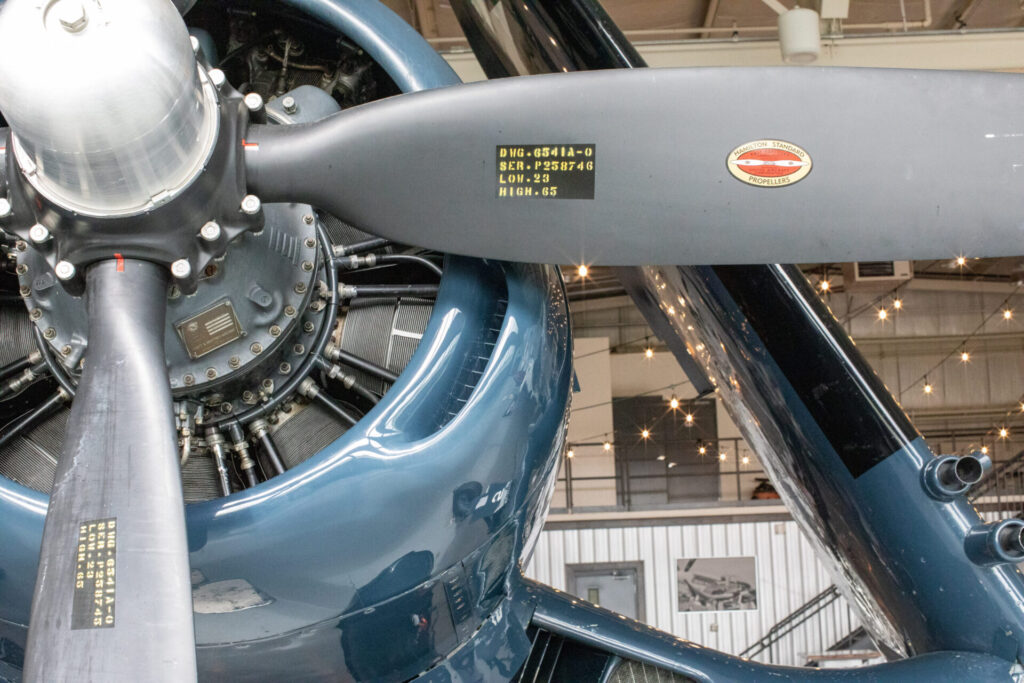World War II was a crucible of technological innovation, a period that saw rapid advancements in numerous fields, including aviation. The war accelerated the development of aircraft, leading to innovations that would shape the future of both military and civilian aviation. Today, the restoration of World War II aircraft serves as a bridge to the past, offering us tangible links to the innovations and sacrifices of a bygone era. This blog post delves into why it is crucial to preserve and restore World War II aviation and why remembering the technological advances of that time is important for our future.
Preserving History at the Warbird Factory
The most immediate reason for restoring World War II aircraft is to preserve history. Each airplane is a testament to the ingenuity and resolve of those who designed, built, and flew it under the most challenging conditions. Restoration efforts ensure that future generations can witness these machines in their tangible form, rather than relegating them to photographs or descriptions in history books. Seeing a Spitfire soar through the sky or hearing the roar of a B-17’s engines offers an immersive experience that connects us directly to the past.
At the Warbird Factory, we are more than just maintenance experts; we are the guardians of aviation history. Our skilled hands ensure these iconic aircraft continue to soar, while we mentor the next generation of aviation talent, passing on a legacy that spans generations.
Honoring Sacrifices: Hangar at 743 and the Warbird Factory
Restoring and maintaining World War II aircraft serve as a tribute to the sacrifices of the men and women who served during the war. Many of these aircraft are the surviving veterans of countless missions, bearing the scars of battle. They represent the bravery and determination of those who fought for freedom, reminding us of the human cost of war. By preserving these planes, we ensure that the stories of those who lived, fought, and often died in them continue to be told.
Understanding Technological Advancements
World War II was a period of significant technological advancement in aviation, with developments that would lay the foundation for the modern aerospace industry. Innovations such as jet propulsion, radar, and improved aerodynamics radically transformed the capabilities of aircraft. Restoring these planes offers insight into the technological leaps made during the war and the ingenuity of engineers and scientists who pushed the boundaries of what was possible. It also allows us to appreciate the evolution of aviation technology from propeller-driven aircraft to the jets and spacecraft of today.
Educational Value
The restoration and display of World War II aircraft have immense educational value. They serve as dynamic teaching tools that can inspire interest in history, science, technology, engineering, and mathematics (STEM) fields. For young people, seeing and sometimes even touching these aircraft can ignite a passion for learning about the past and understanding the science behind flight. Educational programs centered around these restored aircraft can provide hands-on learning opportunities that are far more engaging than traditional classroom settings.
Fostering International Understanding
World War II was a global conflict that affected nations around the world. The aircraft of the era represent the different countries involved, each with its own design philosophies and technological innovations. Restoring aircraft from different nations fosters a broader understanding of the war’s international impact and the collaborative efforts required in peacetime to preserve these machines. It serves as a reminder of the interconnectedness of our histories and the importance of working together to remember and learn from the past.
The Warbird Factory and Hangar at 743
The restoration of World War II aviation is more than just a hobby or a tribute; it’s a vital link to our past. It serves multiple roles: preserving history, honoring sacrifices, understanding technological advancements, providing educational value, and fostering international understanding. These aircraft are not only relics of a bygone era but also beacons of human ingenuity and resilience.
As we move further away from the events of World War II, the importance of remembering the technological advances and the human stories behind these machines grows. By supporting restoration projects and educational initiatives focused on World War II aviation, we ensure that future generations can learn from the past to build a better future. The skies of the 1940s were filled with the roar of engines and the spirit of innovation; by preserving these aircraft, we keep that spirit alive for the generations to come.



